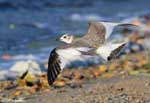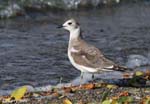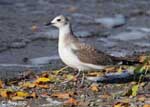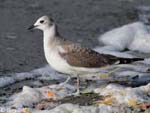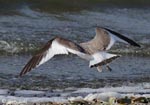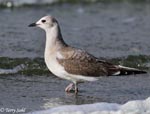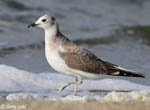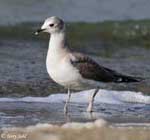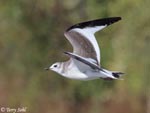| Length: 14 inches | Wingspan: 32 to 36 inches | Seasonality: Very rare visitor |
| ID Keys: Striking wing pattern in flight of black outerprimaries and white inner primaries and secondaries. Dark grey head with black bottom border in breeding plumage. | ||
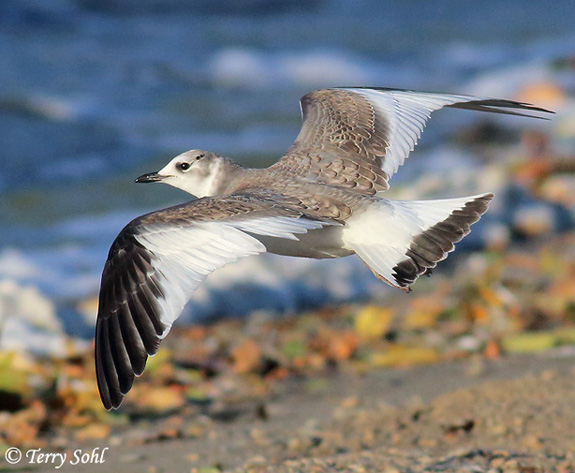 Sabine's Gulls are small
gulls normally found in the high Arctic in summer, and off the continental shelf
in the Southern Hemisphere in the winter. After breeding season, they
spend the vast majority of their time at sea, and are only rarely seen from
shore. However, in the fall a few birds (primarily immatures) might be
found far inland, such as the young bird at the right which was photographed on
the Missouri River in Pierre in September 2003.
Sabine's Gulls are small
gulls normally found in the high Arctic in summer, and off the continental shelf
in the Southern Hemisphere in the winter. After breeding season, they
spend the vast majority of their time at sea, and are only rarely seen from
shore. However, in the fall a few birds (primarily immatures) might be
found far inland, such as the young bird at the right which was photographed on
the Missouri River in Pierre in September 2003.
Habitat: Summer breeding grounds are on the low marshy Arctic Tundra near the coastline. In migration and in winter, they prefer to stay a several miles offshore over the continental shelf where upwelling of cold water occurs. Only rarely are migrants found inland.
Diet: Primarily feeds on insects and aquatic insect larvae during the summer breeding season. Also will feed on small crustaceans, mollusks, small fish, and marine worms in all seasons.
Behavior: Forages by swimming and plucking items from the water's surface, or by flying and dipping down to the water's surface. Will also walk along shorelines in search of food.
Breeding: Non-breeder in South Dakota
Song: High pitched squeaking notes
Migration: Summers in the high Arctic. Winters in the Southern Hemisphere off the coast of western South America and South Africa.
Interactive eBird Map: Click here to access an interactive eBird map of Sabine's Gull sightings
Similar Species: Bonaparte's Gull, Franklin's Gull. See Identification Tips for distinguishing between "black-hooded" (summer plumage) gulls.
Conservation Status: Due to its remote breeding grounds and tendency to migrate far out to sea, they are usually far removed from human disturbance. Populations are generally stable. The IUCN considers the Sabine's Gull to be a species of "Least Concern".
Further Information: 1) USGS Patuxent Bird Identification InfoCenter, Sabine's Gull
3) Audubon Guide - Sabine's Gull
Photo Information: October 5th, 2014 - Wall Lake, Minnehaha County, South Dakota - Terry Sohl
| Click on the map below for a higher-resolution view |
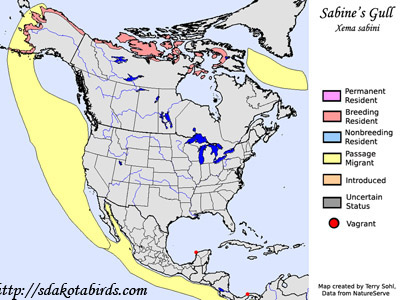 |
| South Dakota Status: Accidental spring migrant, casual fall migrant. |
Additional Sabine's Gull Photos
Click for a higher-resolution version of these photos